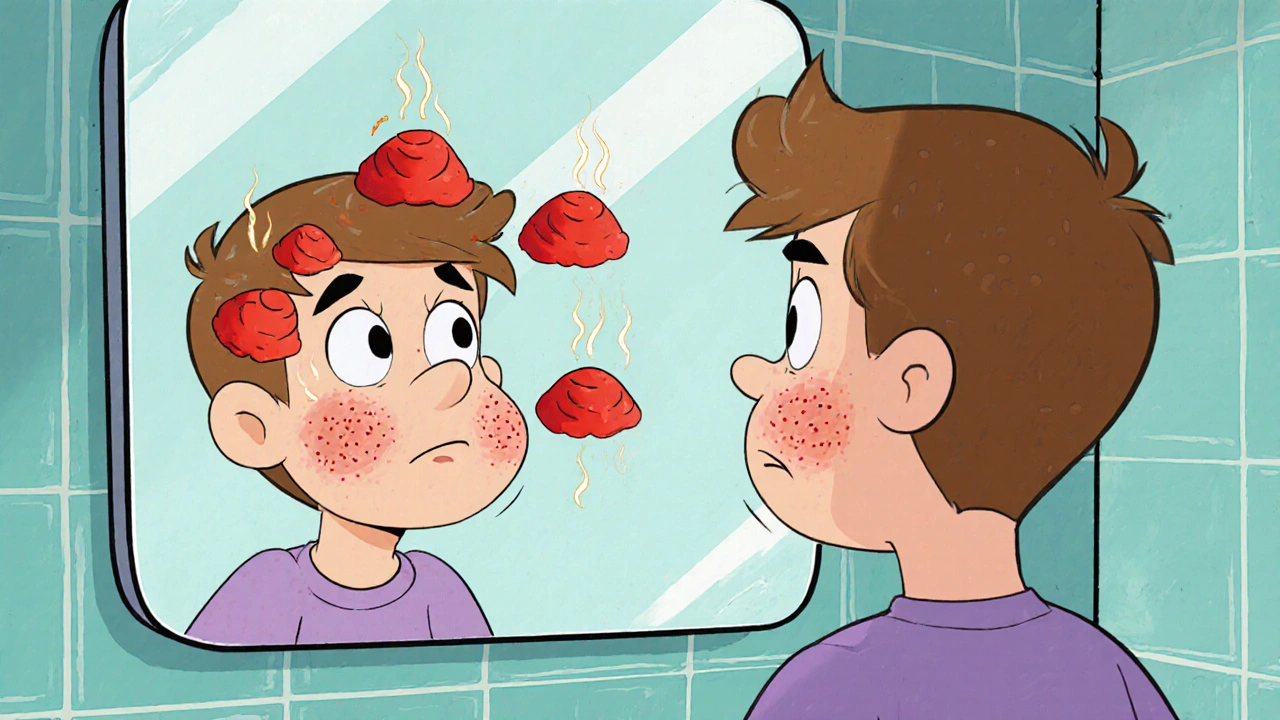nodular acne skincare: Your Complete Guide
When working with nodular acne skincare, a focused approach that combines medical treatments, targeted products, and daily habits to shrink large, deep acne lesions. Also known as severe acne care, it aims to calm inflammation, prevent scarring, and restore confidence.
Nodular acne is the most stubborn form of acne, characterized by painful, firm bumps that sit deep within the skin. These lesions develop when pores become clogged with excess oil, dead cells, and bacteria, then swell under the skin’s surface. Hormonal spikes, stress, and genetics often fuel the flare‑ups, making it essential to address the root causes. A qualified dermatologist can identify whether hormonal imbalances or bacterial overgrowth are driving the condition, and tailor a treatment plan accordingly.
Key Treatments That Really Work
The backbone of nodular acne skincare is targeted medication. Topical retinoids like adapalene or tretinoin speed up cell turnover, preventing clogged pores and reducing existing bumps. For many, a short course of oral isotretinoin is the only way to fully clear nodular lesions, but it requires close monitoring due to potential side effects. Over‑the‑counter allies such as benzoyl peroxide and salicylic acid help reduce surface bacteria and dissolve dead skin cells, making them valuable first‑step options before moving to prescription strength.
A solid daily routine reinforces these treatments. Begin with a gentle, sulfate‑free cleanser that removes excess oil without stripping the barrier. Follow with a chemical exfoliant—preferably a low‑dose salicylic acid serum—to keep pores clear. Apply the chosen retinoid at night, then seal the skin with a non‑comedogenic moisturizer rich in ceramides. Finish every morning with broad‑spectrum SPF 30+; sun exposure can worsen inflammation and increase the risk of post‑inflammatory hyperpigmentation.
While products matter, lifestyle choices play a hidden yet powerful role. Research shows that high‑glycemic foods and dairy can aggravate hormonal acne, especially in teenagers and young adults. Minimizing sugar spikes, staying hydrated, and eating plenty of antioxidant‑rich fruits and vegetables support skin health from the inside out. Adequate sleep and stress‑management techniques—such as meditation or regular exercise—help keep cortisol levels in check, which in turn reduces the severity of nodular breakouts.
Choosing the right products is critical. Look for labels that say “non‑comedogenic,” “oil‑free,” and “fragrance‑free.” These formulations are less likely to clog pores or irritate already inflamed skin. If a product causes burning or excessive dryness, discontinue use and consult your dermatologist; sometimes a simple tweak—like adding a hydrating serum—can make a big difference.
When over‑the‑counter measures fall short, it’s time to bring a professional into the loop. A dermatologist can prescribe oral antibiotics, hormonal therapies (like combined oral contraceptives or spironolactone), or the aforementioned isotretinoin. They may also recommend in‑office procedures such as cortisone injections for the biggest nodules, laser resurfacing, or chemical peels to speed up healing and reduce scarring.
All these pieces—targeted medications, a disciplined skincare routine, smart lifestyle tweaks, and professional guidance—fit together to form a comprehensive hormonal acne management plan whenever hormones are a key driver. By understanding how each element influences the others, you can build a personalized strategy that tackles nodular acne from every angle.
Below you’ll find a curated selection of articles that dive deeper into each of these topics, from the science behind retinoids to real‑world tips for choosing the safest over‑the‑counter cleansers. Explore the collection to find the exact information you need to start clearing those stubborn nodules today.
Learn how to pick effective skincare for nodular acne. Get a step‑by‑step routine, ingredient guide, comparison table, and when to see a dermatologist.

